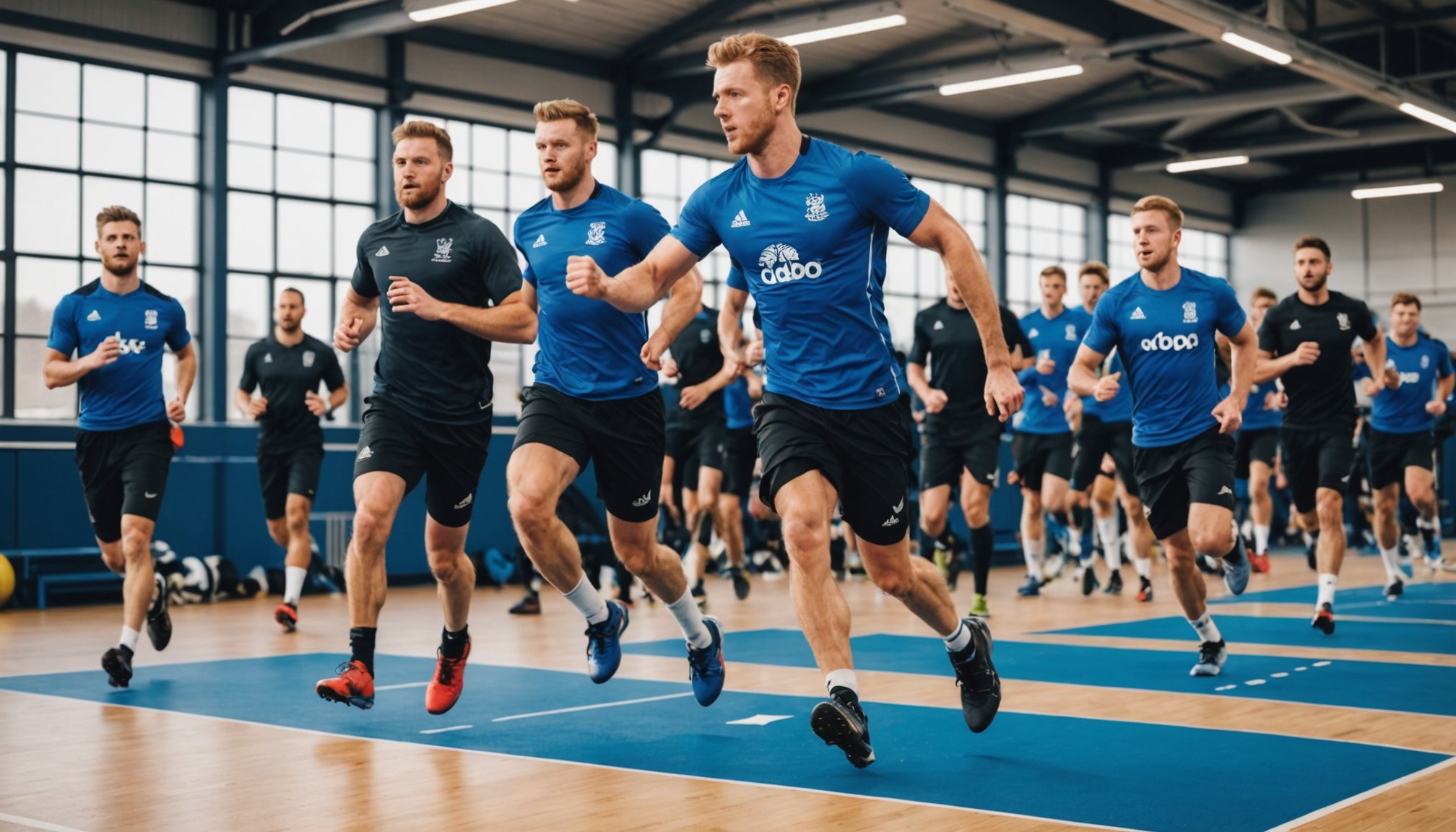Innovative Strategies for Athlete Engagement
Engaging athletes is integral to retaining them in the long term. Athlete engagement is essential for fostering loyalty and encouraging consistent participation within sports clubs. This, in turn, ensures clubs can maintain and grow their membership base.
In the UK, sports clubs are adopting innovative strategies to enhance athlete engagement. For example, some clubs have implemented digital platforms to connect with athletes efficiently. These platforms offer various features, such as personalised training programs and direct communication channels with coaches, enhancing the overall training experience. Moreover, clubs are increasingly investing in community events that bring athletes together outside of regular training sessions, which helps strengthen bonds and creates a supportive community atmosphere.
The benefits of cultivating such an inclusive environment are significant. An engaged athlete is more likely to experience a sense of belonging, which enhances both their satisfaction and performance. By feeling part of a supportive community, athletes are motivated to maintain their involvement, ultimately benefiting from long-term physical and mental health improvements. These strategies highlight innovative approaches to athlete engagement, ensuring that sports clubs can thrive by prioritising the well-being of their members.
Community-Building Practices
Creating a strong sense of community building within sports clubs is essential for fostering sports membership loyalty and maintaining a vibrant, inclusive atmosphere. The right practices can significantly enhance the member experience.
Also to see : Boosting shot precision: how advanced analytics is transforming accuracy for uk netball teams
Creating a Welcoming Environment
Establishing a warm and inviting space within a sports club can significantly impact community building. Welcoming gestures such as friendly greetings, clear communication of club values, and transparent processes set the tone. Inclusivity plays a pivotal role, ensuring everyone feels they belong regardless of their background or skill level.
Organizing Social Events
Social events are key in forging robust connections. These gatherings, from casual meet-ups to themed parties, offer opportunities for members to engage beyond their usual sport-related activities, reinforcing their bond with the club. Such events pave the way for new friendships and deeper ties, which are crucial for sustaining sports membership loyalty.
Encouraging Member Interaction
Fostering dialogue and interaction among members keeps a club dynamic and engaging. Encouraging the sharing of personal stories and experiences helps enhance club culture and understanding, making each member feel valued and heard. Structured activities or forums for discussion can help facilitate these interactions.
Through these practices, a sports club can flourish as a community, thriving on member integration and shared passion.
Personalization in Member Experience
The power of personalized experiences lies in their ability to cater directly to the unique needs of each athlete. By tailoring programs to target individual goals, whether that’s improving endurance or mastering a specific skill, organizations can significantly enhance athlete retention strategies. Such personalized approaches not only foster loyalty but also drive motivation and performance.
Leveraging data is crucial in shaping these personalized experiences. By analyzing metrics such as past performance, preferences, and progress, organizations can inform targeted and personalized communications. These insights help in determining the most effective ways to engage athletes, ensuring that every touchpoint is relevant and valuable to them.
Consider some successful case studies where personalization transformed the athlete experience. In these scenarios, organizations identified specific needs and adapted their offerings accordingly. For instance, customizing training modules based on feedback or adjusting coaching styles to align with individual learning curves led to improved satisfaction and retention.
The focus on personalization not only meets the athletes’ current needs but anticipates future ones, allowing for continually evolving strategies. By embracing these methods, organizations can create compelling, personalized experiences that resonate deeply with their members.
Feedback Mechanisms
Understanding members’ needs is vital for continuous improvement in sports clubs. Engaging with member feedback not only ensures satisfaction but also lights the path for growth and innovation.
Surveys and Questionnaires
Surveys and questionnaires are structured tools that provide invaluable data. These formal channels for member feedback allow for the systematic collection of insights on club experiences and services. Tailored surveys can uncover specific areas for enhancement and help identify trends across the membership. They are a cornerstone of maintaining member satisfaction and directing club resources effectively.
Informal Feedback Approaches
In addition to structured tools, informal feedback is equally powerful. Casual conversations, suggestion boxes, or digital forums foster an environment where members feel free to express their thoughts and ideas spontaneously. This approach taps into the genuine, unvarnished opinions of members, providing a more relatable and immediate snapshot of member sentiments.
Implementing Changes Based on Feedback
Feedback is not just about collecting data; it’s about action. Real-life examples demonstrate that member feedback can lead to tangible improvements, such as updated facilities or adjusted training schedules. The importance of regular, inclusive feedback loops cannot be overstated—it’s the catalyst for meaningful change and enriched member experiences.
Practical Tips for Implementation
Integrating creative approaches within existing club structures requires thoughtful planning and clear objectives. Start by aligning your implementation strategies with the unique culture and values of your club. Engage members in brainstorming sessions to generate diverse ideas for activities that excite and challenge participants.
Once you’ve identified creative activities, you’ll need the right tools to track member engagement and retention. Using digital platforms like Google Analytics can offer real-time insights into participation trends. Additionally, tools like Slack or Microsoft Teams facilitate communication, promoting a sense of community and boosting retention rates.
Ensuring a long-term commitment from athletes involves consistent motivation and support. Develop a mentorship program whereby experienced members guide newcomers, providing a personal connection and shared learning experience. Recognising achievements through awards or shout-outs on social media can also inspire loyalty and sustained involvement.
Lastly, periodic surveys can serve as a valuable resource to measure satisfaction and gather feedback. This input allows for the adjustment of strategies to better suit club members’ evolving needs. By implementing these carefully thought-out strategies, clubs can foster a thriving environment where creative approaches lead to lasting engagement.
Case Studies of Success
When examining successful retention initiatives among UK sports clubs, some clubs stand out due to their innovative approaches and effective implementations. These cases offer valuable lessons and strategies that other clubs can learn from to enhance their member retention.
Highlighting UK Sports Clubs
Several sports clubs across the UK have pioneered successful retention strategies by focusing on community building and member engagement. These clubs often leverage digital platforms to maintain communication, organize events, and gather feedback, ensuring their members feel valued and involved.
Lessons Learned from Successful Programs
The key to their success lies in understanding member needs and integrating personalized experiences. Successful programs often include regular social events, tailored coaching sessions, and community-building activities that foster a sense of belonging. By providing a diverse range of activities, clubs can appeal to varying interests, ensuring higher retention rates.
Replicating Success in Other Clubs
To replicate these successes, clubs should start by conducting needs assessments to understand their members’ preferences. Implementing regular member feedback loops can also provide insights into areas needing improvement. Other clubs should focus on creating an inclusive community atmosphere through organized events and comprehensive, personalized services. This approach not only increases satisfaction but also reinforces loyalty, resulting in successful retention initiatives.
















